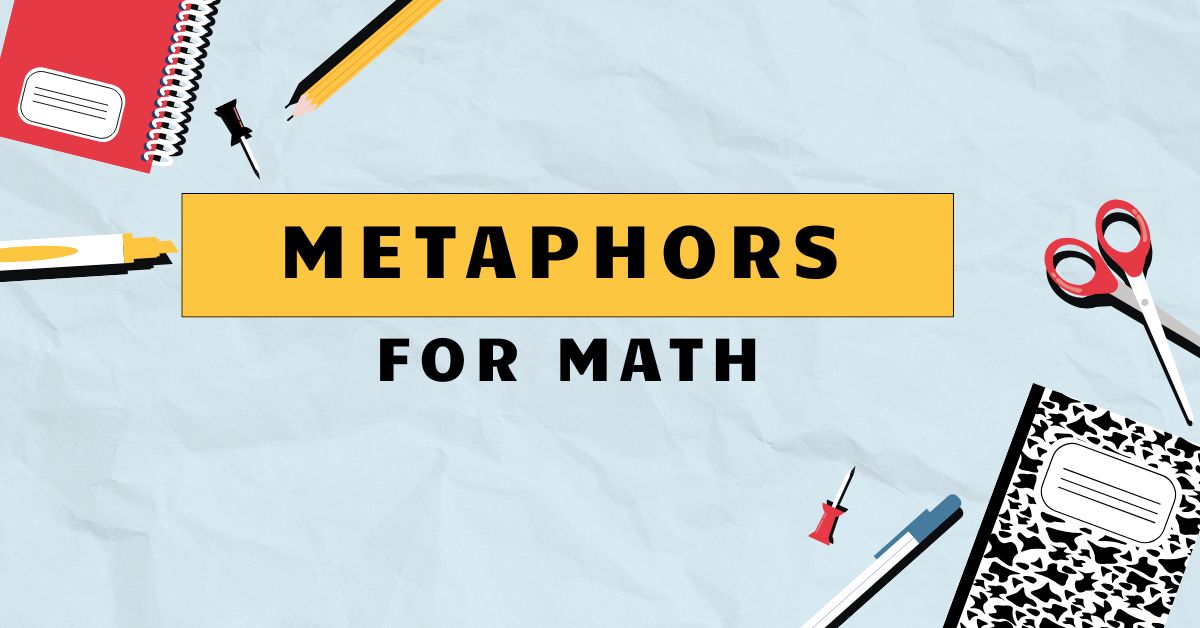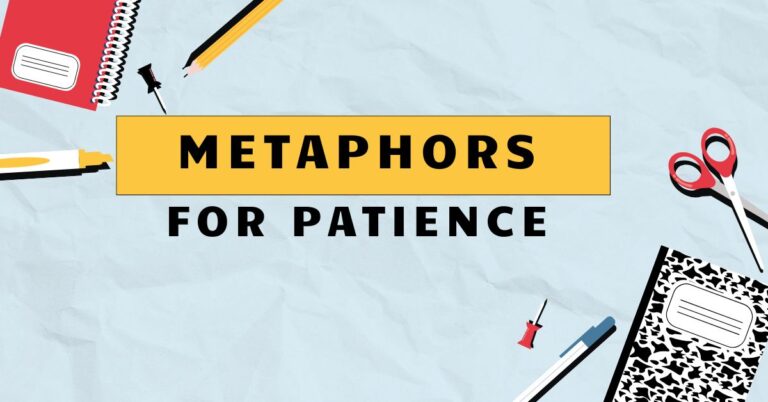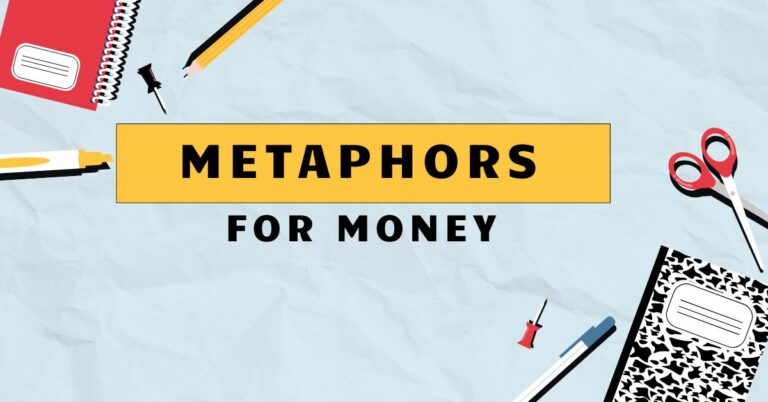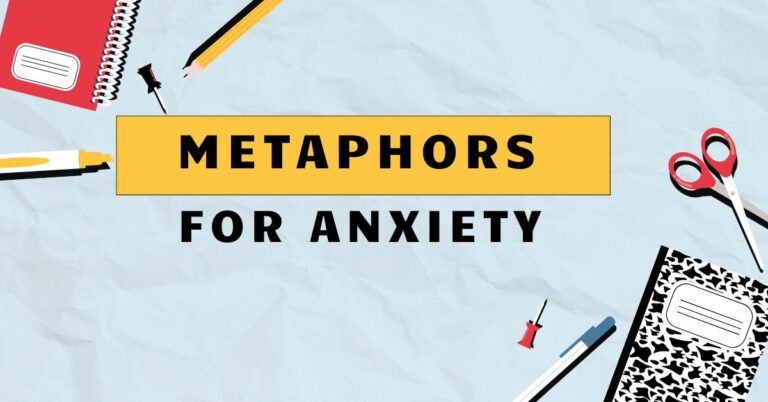43 Math Metaphors: Understanding Mathematical Concepts
Metaphors are powerful tools that help us understand abstract concepts by relating them to more familiar ideas. In mathematics, where concepts can often be highly abstract, metaphors play a crucial role in making these concepts accessible and intuitive.
Understanding math metaphors is essential for students, educators, and anyone who wants to grasp mathematical principles more deeply. This article explores the world of math metaphors, providing definitions, examples, and practical exercises to enhance your understanding.
Table of Contents
- Introduction
- Definition of Math Metaphors
- Structural Breakdown of Math Metaphors
- Types and Categories of Math Metaphors
- Examples of Math Metaphors
- Usage Rules for Math Metaphors
- Common Mistakes with Math Metaphors
- Practice Exercises
- Advanced Topics in Math Metaphors
- Frequently Asked Questions
- Conclusion
Definition of Math Metaphors
A math metaphor is a figure of speech that uses an analogy or comparison to explain a mathematical concept. It maps a familiar idea, process, or object onto a more abstract mathematical entity, making it easier to understand and visualize.
Math metaphors help bridge the gap between concrete experiences and abstract mathematical thinking. They are not literal definitions but rather illustrative comparisons that aid comprehension.
Math metaphors function by creating a connection between two seemingly unrelated domains: thesource domain(the familiar concept) and thetarget domain(the mathematical concept). This mapping allows learners to leverage their existing knowledge of the source domain to understand the target domain.
For example, thinking of a function as a “machine” (source domain) that takes an input and produces an output (target domain) is a common and effective metaphor.
The contexts in which math metaphors are used are varied. They appear in textbooks, classrooms, research papers, and everyday conversations about mathematics.
Teachers often use metaphors to introduce new concepts, while students may use them to internalize and remember information. Researchers might employ metaphors to explore new mathematical ideas and communicate complex findings.
Structural Breakdown of Math Metaphors
The structure of a math metaphor involves several key components. First, there’s thesource domain, which is the known or familiar concept used for comparison.
Second, there’s thetarget domain, which is the abstract mathematical concept being explained. Third, there’s themapping, which is the connection or analogy between the source and target domains.
This mapping highlights specific similarities or relationships that make the metaphor effective.
Consider the metaphor of a “number line.” Here, the source domain is a physical line, and the target domain is the set of real numbers. The mapping connects points on the line to specific numerical values.
This allows us to visualize the ordering of numbers and understand concepts like positive and negative numbers, intervals, and distance.
Another example is thinking of integration as “finding the area under a curve.” The source domain is the physical concept of area, and the target domain is the mathematical operation of integration. The mapping connects the area under the curve to the definite integral, allowing us to visualize and understand the integral as a measure of accumulation.
Effective math metaphors often rely on clear and intuitive mappings. The stronger and more direct the connection between the source and target domains, the more effective the metaphor will be.
A well-chosen metaphor can provide a powerful mental model that facilitates understanding and problem-solving.
Types and Categories of Math Metaphors
Arithmetic Metaphors
Arithmetic metaphors often relate basic mathematical operations to everyday actions or objects. For example, addition can be thought of as “combining” or “putting together,” while subtraction can be seen as “taking away” or “removing.” Multiplication can be understood as “repeated addition,” and division as “sharing equally.” These metaphors help children initially grasp these fundamental concepts.
Geometric Metaphors
Geometric metaphors are used to explain shapes, spatial relationships, and transformations. For instance, a circle can be described as “a set of points equidistant from a center,” or more metaphorically as “a loop with no beginning or end.” Transformations like rotations and reflections can be visualized as “turning” or “mirroring” objects.
These metaphors help develop spatial reasoning and intuition.
Algebraic Metaphors
Algebraic metaphors often involve the concept of “balancing” or “solving for the unknown.” An equation can be thought of as a “balance scale,” where the goal is to keep both sides equal. Variables can be seen as “placeholders” or “mystery boxes” that need to be uncovered.
These metaphors help students understand the principles of algebraic manipulation and equation solving.
Calculus Metaphors
Calculus metaphors are used to explain concepts like limits, derivatives, and integrals. A limit can be thought of as “approaching” a value without necessarily reaching it.
A derivative can be seen as “the slope of a curve at a point,” or “the instantaneous rate of change.” An integral, as mentioned earlier, can be understood as “the area under a curve.” These metaphors provide visual and intuitive interpretations of these abstract concepts.
Statistical Metaphors
Statistical metaphors help explain concepts like probability, distributions, and hypothesis testing. Probability can be thought of as “the chance of something happening,” or “the likelihood of an event.” A normal distribution can be visualized as a “bell curve,” representing the distribution of data around a mean.
Hypothesis testing can be seen as “a trial” where evidence is weighed to make a decision. These metaphors make statistical concepts more accessible and relevant.
Examples of Math Metaphors
Arithmetic Examples
The following table provides examples of arithmetic metaphors, illustrating how basic operations can be related to everyday concepts.
| Mathematical Concept | Metaphor | Explanation |
|---|---|---|
| Addition | Combining | Adding two numbers is like combining two groups of objects. |
| Addition | Putting Together | Think of addition as putting together building blocks to create a larger structure. |
| Subtraction | Taking Away | Subtraction is like taking away some items from a collection. |
| Subtraction | Removing | Imagine removing a piece from a puzzle; that’s subtraction. |
| Multiplication | Repeated Addition | Multiplying 3 by 4 is like adding 3 four times (3 + 3 + 3 + 3). |
| Multiplication | Scaling Up | Think of multiplication as scaling up a recipe; doubling the ingredients. |
| Division | Sharing Equally | Dividing 12 cookies among 3 friends is like sharing them equally. |
| Division | Splitting | Division is like splitting a pizza into equal slices. |
| Fractions | Parts of a Whole | A fraction represents a part of a whole object or quantity. |
| Fractions | Slices of Pie | Imagine a pie cut into slices; each slice is a fraction of the whole pie. |
| Positive Numbers | Gaining | Positive numbers represent gains or increases. |
| Negative Numbers | Debt | Negative numbers represent debts or losses. |
| Zero | Neutral | Zero represents a neutral point, neither gain nor loss. |
| Equals | Balance | The equals sign means both sides have the same value, like a balanced scale. |
| Inequality | Unbalanced | An inequality means the two sides do not have the same value, like an unbalanced scale. |
| Ratio | Comparison | A ratio compares two quantities, like comparing the number of apples to oranges. |
| Percentage | Out of 100 | A percentage represents a part out of 100. |
| Exponents | Repeated Multiplication | An exponent indicates repeated multiplication of a number by itself. |
| Square Root | Finding the Side | The square root of a number is like finding the side length of a square with that area. |
| Order of Operations | Recipe Steps | The order of operations is like following the steps in a recipe. |
| Prime Numbers | Building Blocks | Prime numbers are the building blocks of all other numbers. |
| Composite Numbers | Combinations | Composite numbers are combinations of prime numbers. |
| Greatest Common Divisor | Largest Shared Factor | The GCD is the largest factor shared by two or more numbers. |
| Least Common Multiple | Smallest Shared Multiple | The LCM is the smallest multiple shared by two or more numbers. |
| Rounding | Approximation | Rounding is like approximating a number to a nearby value. |
Geometric Examples
Geometric metaphors help visualize and understand spatial relationships and properties of shapes. The following table presents several examples.
| Mathematical Concept | Metaphor | Explanation |
|---|---|---|
| Circle | Loop with No End | A circle is a continuous loop with no beginning or end. |
| Circle | Wheel | Think of a circle as a wheel that can roll continuously. |
| Square | Equal Sides | A square is like a box with all sides of equal length. |
| Square | Perfect Rectangle | A square is a perfect rectangle with equal sides and right angles. |
| Triangle | Three-Sided Figure | A triangle is a figure formed by three straight lines. |
| Triangle | Strong Shape | Triangles are structurally strong shapes used in buildings and bridges. |
| Line | Straight Path | A line is a straight path extending infinitely in both directions. |
| Line | String Pulled Taut | Imagine a line as a string pulled taut between two points. |
| Point | Location | A point represents a specific location in space. |
| Point | Tiny Dot | A point can be thought of as a tiny dot with no size. |
| Angle | Opening | An angle is the opening between two lines that meet at a point. |
| Angle | Wedge | Think of an angle as a wedge cut from a circle. |
| Parallel Lines | Never Meeting | Parallel lines are like train tracks that never meet. |
| Parallel Lines | Equal Distance Apart | Parallel lines maintain the same distance apart at all points. |
| Perpendicular Lines | Right Angle | Perpendicular lines intersect at a right angle (90 degrees). |
| Perpendicular Lines | Cross | Perpendicular lines form a perfect cross. |
| Volume | Capacity | Volume is the amount of space a 3D object can hold. |
| Volume | Filling a Container | Think of volume as filling a container with water. |
| Area | Surface | Area is the measure of a surface. |
| Area | Covering a Floor | Think of area as the amount of carpet needed to cover a floor. |
| Symmetry | Mirror Image | Symmetry is when one half of an object is a mirror image of the other. |
| Symmetry | Balanced | A symmetrical object is balanced and harmonious. |
| Radius | Center to Edge | The radius is the distance from the center of a circle to its edge. |
| Diameter | Across the Circle | The diameter is the distance across a circle through its center. |
Algebraic Examples
Algebraic metaphors relate abstract symbols and equations to more tangible concepts. The table below provides some examples.
| Mathematical Concept | Metaphor | Explanation |
|---|---|---|
| Equation | Balance Scale | An equation is like a balance scale, with both sides needing to be equal. |
| Equation | Mathematical Sentence | An equation is a mathematical sentence that states the equality of two expressions. |
| Variable | Unknown | A variable represents an unknown quantity that needs to be solved for. |
| Variable | Placeholder | Think of a variable as a placeholder for a number. |
| Solving for X | Finding the Value | Solving for x is like finding the value of a hidden treasure. |
| Solving for X | Isolating the Variable | The goal is to isolate the variable on one side of the equation. |
| Function | Machine | A function is like a machine that takes an input and produces an output. |
| Function | Transformation | A function transforms an input value into an output value. |
| Inequality | Comparison | An inequality compares two values, showing which is greater or lesser. |
| Inequality | Range of Values | An inequality represents a range of possible values. |
| Graph | Visual Representation | A graph is a visual representation of a relationship between two variables. |
| Graph | Map | Think of a graph as a map showing how one variable changes with another. |
| Slope | Steepness | The slope of a line represents its steepness. |
| Slope | Rate of Change | The slope indicates the rate at which the y-value changes with respect to the x-value. |
| Intercept | Crossing Point | An intercept is the point where a line crosses an axis. |
| Intercept | Starting Point | The y-intercept is the starting point of a line on the y-axis. |
| Polynomial | Expression | A polynomial is an expression consisting of variables and coefficients. |
| Polynomial | Combination of Terms | A polynomial is a combination of terms with different powers of variables. |
| System of Equations | Puzzle | A system of equations is like a puzzle where you need to find values that satisfy all equations. |
| System of Equations | Intersection Points | Solving a system of equations finds the intersection points of the graphs of the equations. |
Calculus Examples
The following table presents calculus metaphors, illustrating how complex concepts can be made more understandable through analogies.
| Mathematical Concept | Metaphor | Explanation |
|---|---|---|
| Limit | Approaching | A limit is the value a function approaches as the input gets closer to a certain point. |
| Limit | Target | Imagine a limit as a target that a function gets closer and closer to. |
| Derivative | Slope of a Curve | The derivative is the slope of a curve at a particular point. |
| Derivative | Instantaneous Rate of Change | The derivative represents the instantaneous rate of change of a function. |
| Integral | Area Under a Curve | The integral is the area under a curve between two points. |
| Integral | Accumulation | An integral represents the accumulation of a quantity over an interval. |
| Tangent Line | Touching | A tangent line is a line that touches a curve at a single point. |
| Tangent Line | Instantaneous Direction | The tangent line shows the instantaneous direction of a curve at a point. |
| Infinitesimal | Extremely Small | An infinitesimal is an extremely small quantity, approaching zero. |
| Infinitesimal | Approaching Zero | Think of an infinitesimal as a quantity that gets infinitely close to zero. |
| Optimization | Best Solution | Optimization is finding the best solution to a problem, maximizing or minimizing a quantity. |
| Optimization | Finding the Peak | Think of optimization as finding the peak of a mountain or the lowest point in a valley. |
Statistical Examples
Statistical metaphors help explain concepts related to data analysis and probability. The following table provides examples.
| Mathematical Concept | Metaphor | Explanation |
|---|---|---|
| Probability | Chance | Probability is the chance of an event occurring. |
| Probability | Likelihood | Probability represents the likelihood of something happening. |
| Normal Distribution | Bell Curve | A normal distribution is shaped like a bell, with most data clustered around the mean. |
| Normal Distribution | Typical Data | A normal distribution represents how typical data is distributed. |
| Mean | Average | The mean is the average value of a set of numbers. |
| Mean | Center of Gravity | The mean is like the center of gravity of a dataset. |
| Median | Middle Value | The median is the middle value in a dataset when it is ordered. |
| Median | Separator | The median separates the higher half from the lower half of a dataset. |
| Standard Deviation | Spread | Standard deviation measures the spread of data around the mean. |
| Standard Deviation | Variability | Standard deviation indicates the variability in a dataset. |
| Hypothesis Testing | Trial | Hypothesis testing is like a trial where evidence is weighed to make a decision. |
| Hypothesis Testing | Inference | Hypothesis testing allows us to make inferences about a population based on sample data. |
| Correlation | Relationship | Correlation measures the relationship between two variables. |
| Correlation | Association | Correlation indicates the association between two variables. |
| Regression | Prediction | Regression is used to predict the value of one variable based on the value of another. |
| Regression | Estimating Relationships | Regression helps estimate the relationships between variables. |
| Sampling | Representative Subset | Sampling involves selecting a representative subset of a population. |
| Sampling | Small Scale Study | Think of sampling as conducting a small-scale study to understand a larger population. |
Usage Rules for Math Metaphors
While math metaphors are helpful, it’s crucial to use them carefully. The primary rule is to ensure the metaphor accurately reflects the mathematical concept.
An inaccurate metaphor can lead to misunderstandings and incorrect problem-solving. It is important to clarify the limitations of the metaphor.
Metaphors are simplifications and do not capture every aspect of the mathematical concept.
Another rule is to choose metaphors that are appropriate for the audience. A metaphor that works well for a young child may not be suitable for an advanced student.
Consider the learner’s prior knowledge and understanding when selecting a metaphor. Moreover, it’s important to use multiple metaphors to explain the same concept.
Different metaphors can highlight different aspects and provide a more comprehensive understanding.
Be consistent in your use of metaphors. Switching between different metaphors without explanation can confuse learners.
Stick to a particular metaphor throughout a lesson or explanation to maintain clarity. Finally, always relate the metaphor back to the mathematical concept.
The goal is to use the metaphor as a tool to understand the mathematics, not as a replacement for it.
Exceptions and Special Cases:Not all mathematical concepts lend themselves well to metaphorical explanations. Very abstract or highly technical concepts may require more formal definitions and explanations.
In such cases, it’s best to avoid forcing a metaphor that doesn’t fit naturally.
Common Mistakes with Math Metaphors
One common mistake is using metaphors that are too simplistic or misleading. For instance, saying “division always makes numbers smaller” is incorrect because dividing by a fraction makes the number larger.
A better metaphor would be “division splits a quantity into equal parts,” which avoids this misconception.
Another mistake is over-relying on a single metaphor. For example, if you only ever think of a function as a “machine,” you might struggle to understand functions that don’t fit this model, such as piecewise functions.
It’s important to expose learners to a variety of metaphors to broaden their understanding. Also, failing to clarify the limitations of a metaphor can lead to misunderstandings.
Always explain what the metaphor does *not* represent.
Correct vs. Incorrect Examples:
Incorrect: “Fractions are always smaller than whole numbers.”
Correct: “A fraction represents a part of a whole.”
Incorrect: “Multiplication always makes numbers bigger.”
Correct: “Multiplication is repeated addition; multiplying by a fraction can make a number smaller.”
Incorrect: “Derivatives are just complicated slopes.”
Correct: “A derivative is the instantaneous rate of change, which can be visualized as the slope of a tangent line.”
Practice Exercises
Test your understanding of math metaphors with these exercises. Identify the mathematical concept and the metaphor being used in each statement.
| Question | Answer |
|---|---|
| 1. An equation is like a balance scale. What is the mathematical concept and the metaphor? | Mathematical concept: Equation; Metaphor: Balance Scale |
| 2. Probability is the chance of something happening. What is the mathematical concept and the metaphor? | Mathematical concept: Probability; Metaphor: Chance |
| 3. A derivative is the slope of a curve. What is the mathematical concept and the metaphor? | Mathematical concept: Derivative; Metaphor: Slope of a Curve |
| 4. Addition is like combining two groups of objects. What is the mathematical concept and the metaphor? | Mathematical concept: Addition; Metaphor: Combining |
| 5. A circle is a loop with no end. What is the mathematical concept and the metaphor? | Mathematical concept: Circle; Metaphor: Loop with no end |
| 6. Solving for x is like finding the value of a hidden treasure. What is the mathematical concept and the metaphor? | Mathematical concept: Solving for x; Metaphor: Finding the value of a hidden treasure |
| 7. An integral is the area under a curve. What is the mathematical concept and the metaphor? | Mathematical concept: Integral; Metaphor: Area under a curve |
| 8. Subtraction is like taking away some items from a collection. What is the mathematical concept and the metaphor? | Mathematical concept: Subtraction; Metaphor: Taking away |
| 9. Parallel lines are like train tracks that never meet. What is the mathematical concept and the metaphor? | Mathematical concept: Parallel lines; Metaphor: Train tracks that never meet |
| 10. A function is like a machine that takes an input and produces an output. What is the mathematical concept and the metaphor? | Mathematical concept: Function; Metaphor: Machine |
Exercise 2: Fill in the Blanks
| Question | Answer |
|---|---|
| 1. __________ is like sharing equally. | Division |
| 2. __________ is the average value of a set of numbers. | Mean |
| 3. A __________ represents a part of a whole. | Fraction |
| 4. The __________ is the distance around a circle. | Circumference |
| 5. __________ is the chance of an event occurring. | Probability |
| 6. __________ is the area under a curve. | Integral |
| 7. A __________ is a visual representation of data. | Graph |
| 8. A __________ is a straight path extending infinitely in both directions. | Line |
| 9. A __________ is the slope of a curve. | Derivative |
| 10. __________ are like building blocks of all other numbers. | Prime Numbers |
Advanced Topics in Math Metaphors
For advanced learners, exploring the philosophical underpinnings of math metaphors can provide deeper insights. Consider the role of metaphors in mathematical discovery.
How do metaphors influence the way mathematicians think about and explore new concepts? Research in cognitive science suggests that metaphors are not just pedagogical tools but are integral to the creative process in mathematics.
Another advanced topic is the study of “conceptual metaphors” in mathematics. This involves analyzing the underlying conceptual structures that shape our understanding of mathematical ideas.
For example, the conceptual metaphor “Numbers are Points on a Line” influences how we think about number systems and operations. Understanding these conceptual metaphors can reveal the deeper cognitive roots of mathematical thinking.
Finally, explore the use of metaphors in advanced mathematical fields like topology, abstract algebra, and differential geometry. These fields often rely on highly abstract concepts that are difficult to grasp without the aid of sophisticated metaphors.
Analyzing the metaphors used in these fields can provide a deeper appreciation of the power and limitations of metaphorical thinking in mathematics.
Frequently Asked Questions
Q1: Why are math metaphors important?
A1: Math metaphors make abstract mathematical concepts more accessible and understandable by relating them to familiar ideas and experiences. They help bridge the gap between concrete and abstract thinking, facilitating learning and problem-solving.
Q2: How do I choose the right math metaphor?A2: Choose metaphors that are accurate, relevant, and appropriate for the audience. Consider the learner’s prior knowledge and understanding.
Select metaphors that highlight key aspects of the mathematical concept and avoid those that are misleading or overly simplistic.
Q3: Can metaphors be misleading?
A3: Yes, metaphors can be misleading if they are inaccurate or if their limitations are not clarified. Always explain what the metaphor does *not* represent and be aware of potential misconceptions.
Q4: Should I use multiple metaphors for the same concept?
A4: Yes, using multiple metaphors can provide a more comprehensive understanding by highlighting different aspects of the concept. Different metaphors can offer different perspectives and help learners develop a more robust mental model.
Q5: How do I integrate math metaphors into my teaching?A5: Introduce metaphors gradually and relate them explicitly to the mathematical concept. Use visual aids and real-world examples to illustrate the metaphor.
Encourage students to create their own metaphors to deepen their understanding.
Q6: What if a student doesn’t understand a particular metaphor?
A6: Try a different metaphor or explain the concept using a more formal definition. Not all metaphors work for all learners, so it’s important to have alternative explanations available.
Q7: Are math metaphors only for beginners?
A7: No, math metaphors can be useful for learners at all levels. Even advanced students can benefit from using metaphors to explore new concepts and develop deeper insights.
Q8: How can I tell if a metaphor is effective?
A8: An effective metaphor should improve understanding and facilitate problem-solving. If learners are able to apply the metaphor to solve problems and explain the concept in their own words, then the metaphor is likely effective.
Q9: What is the difference between a metaphor and an analogy in mathematics?
A9: While the terms are often used interchangeably, a metaphor is a broader term for any comparison that isn’t literally true, while an analogy often implies a more structured and detailed comparison between two systems or concepts. In practice, the distinction in mathematics is subtle.
Q10: Can the history of mathematics inform the use of metaphors?A10: Absolutely. Understanding how mathematical concepts were originally conceived and developed often reveals the underlying metaphors that guided their creation.
This historical context can provide valuable insights for teaching and learning.
Conclusion
Math metaphors are powerful tools for understanding abstract mathematical concepts. By relating these concepts to familiar ideas and experiences, metaphors make mathematics more accessible and engaging.
Understanding the structure, types, and usage rules of math metaphors can significantly enhance your ability to learn, teach, and communicate mathematical ideas effectively. Remember to choose metaphors carefully, clarify their limitations, and use them as a bridge to deeper mathematical understanding.
By incorporating math metaphors into your learning and teaching strategies, you can foster a more intuitive and meaningful understanding of mathematics. Keep practicing, exploring different metaphors, and reflecting on how they shape your understanding.
With consistent effort, you can unlock the power of math metaphors and transform your relationship with mathematics.







